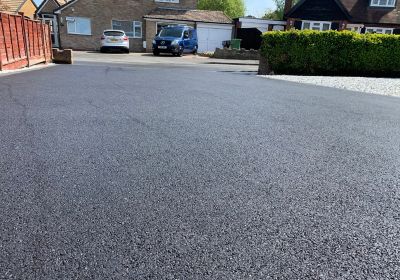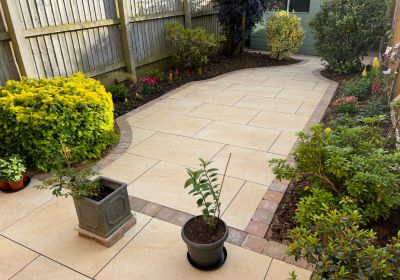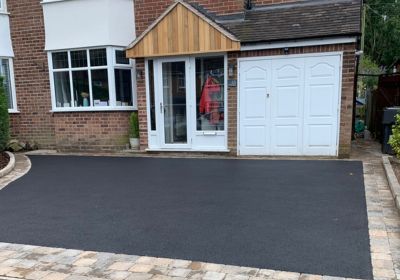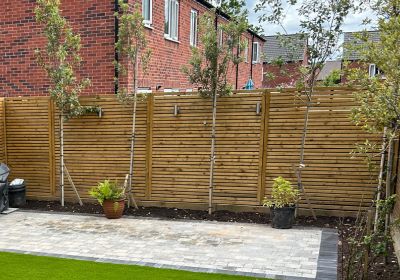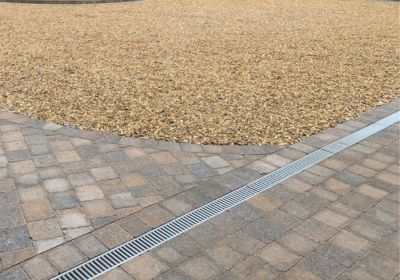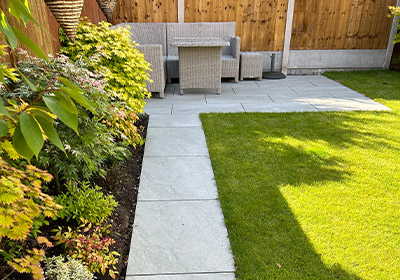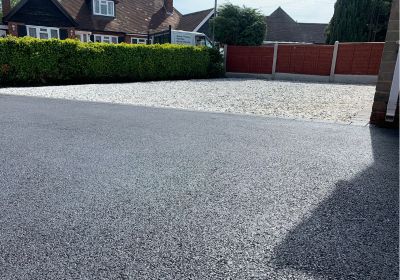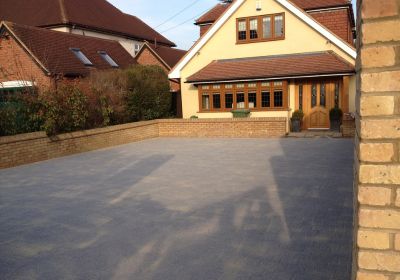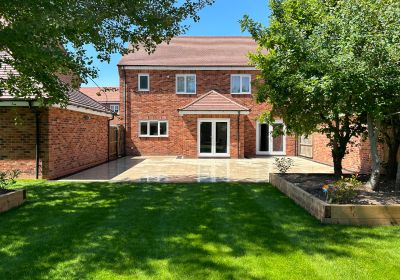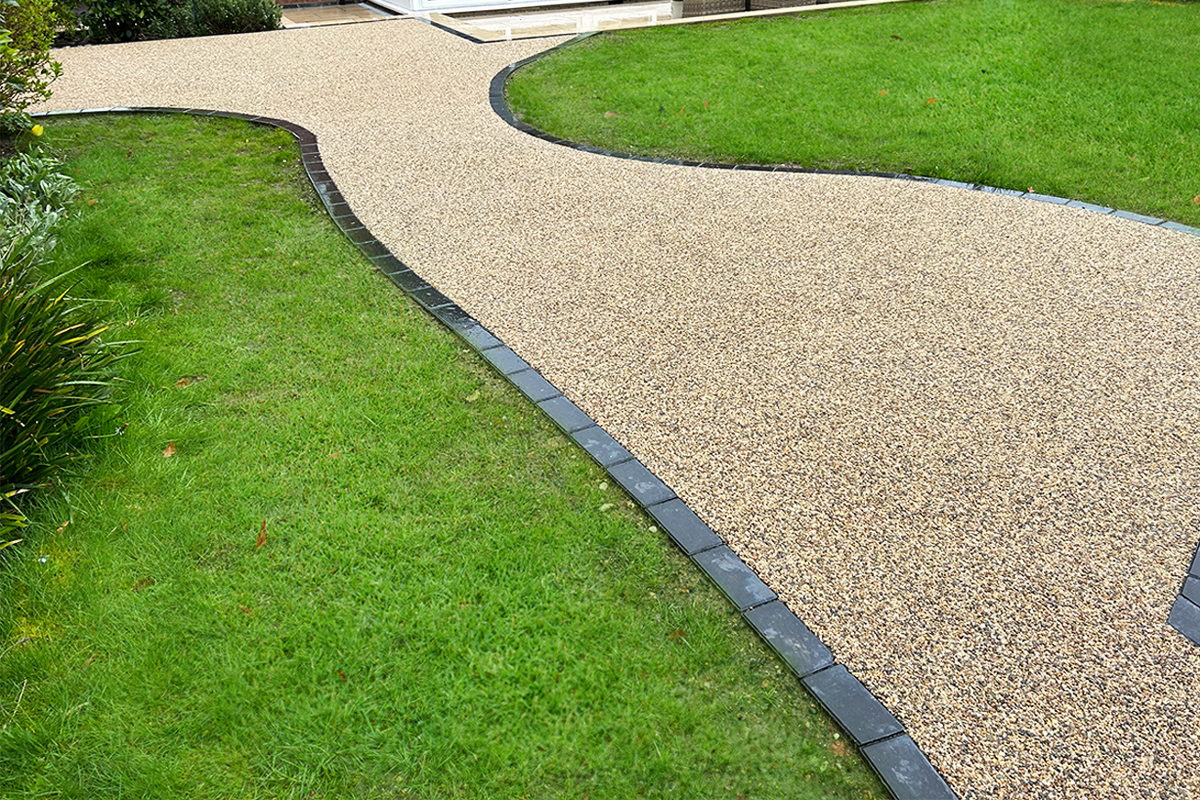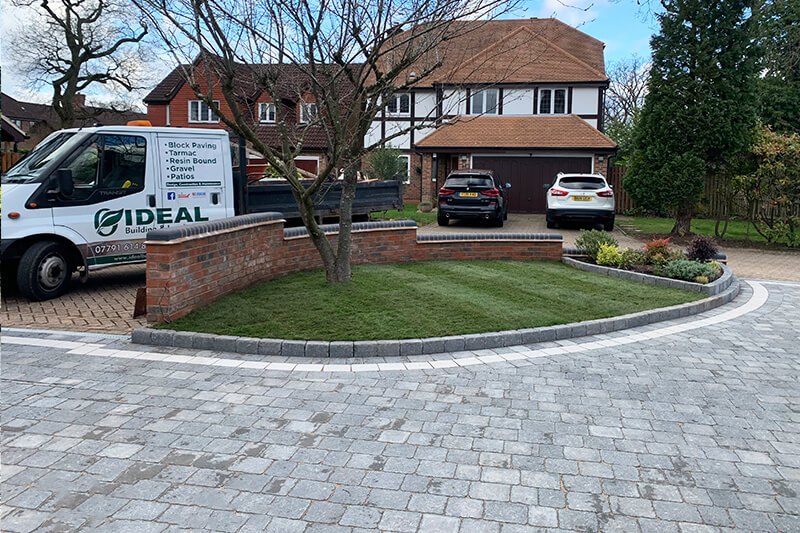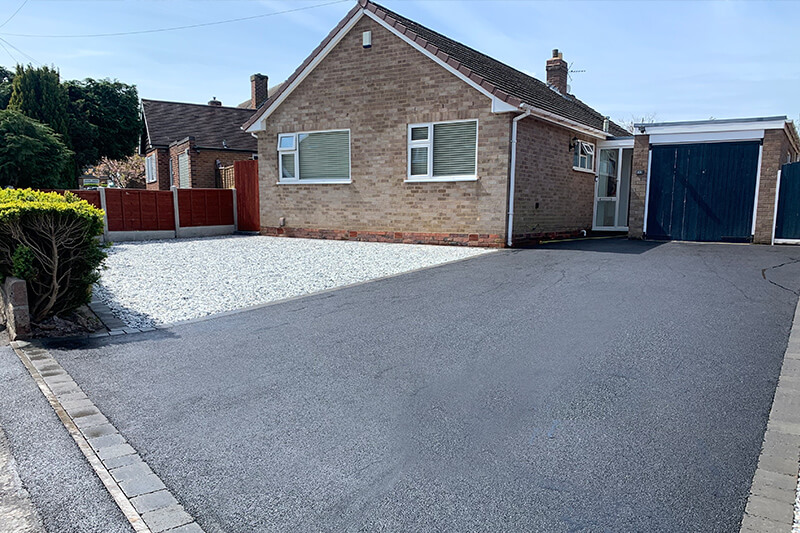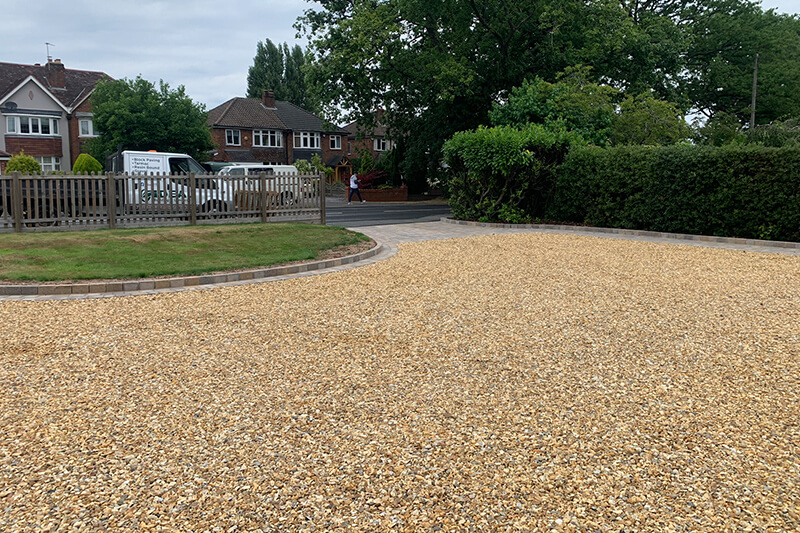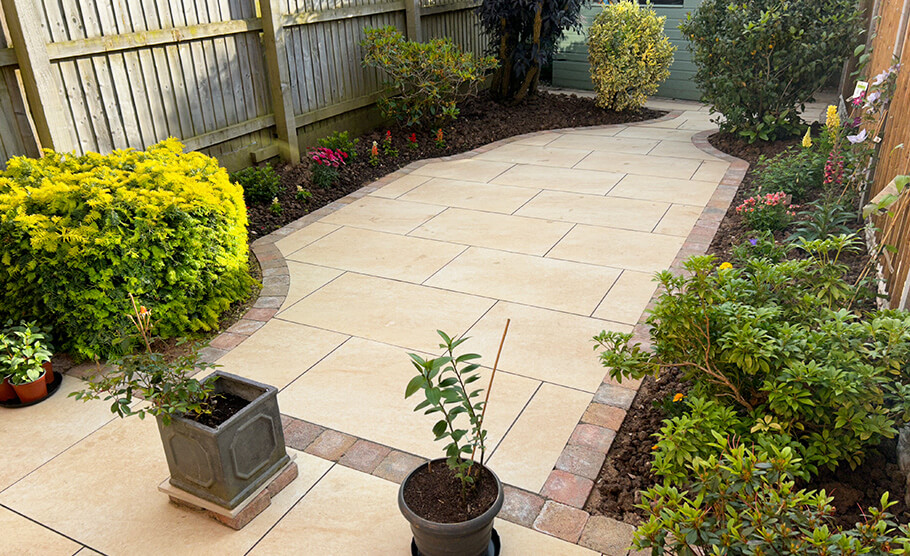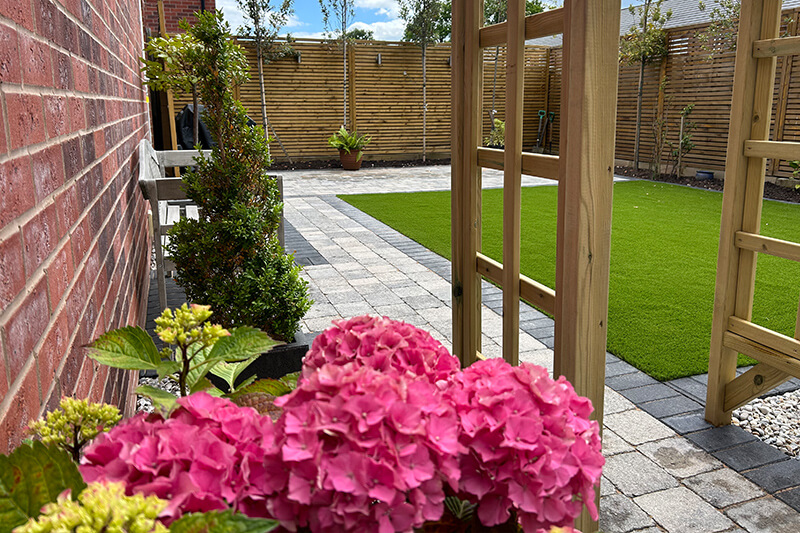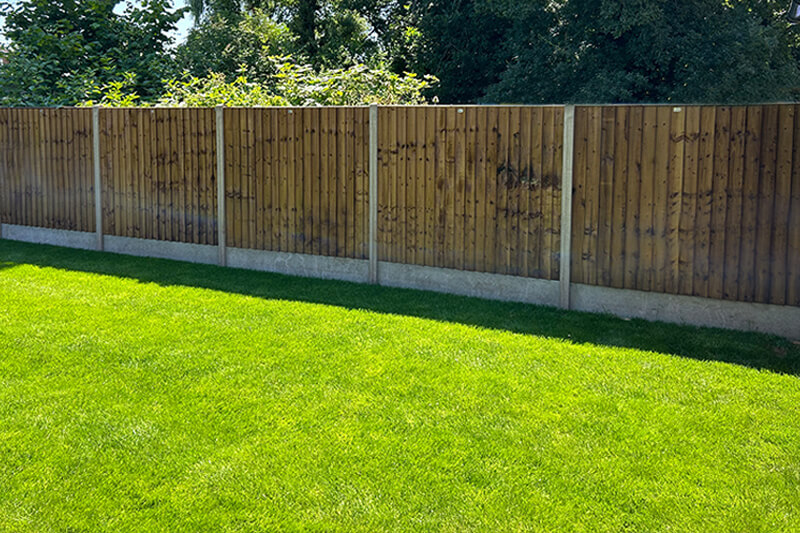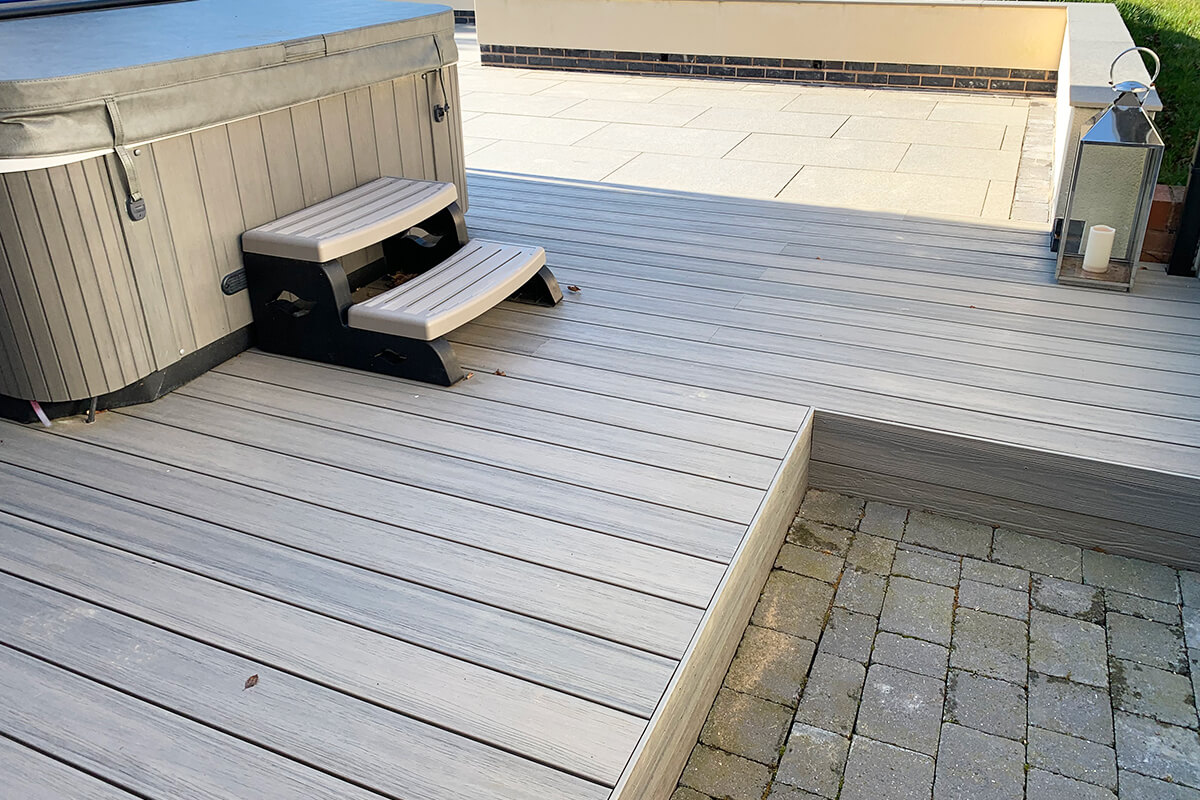Top Tips For Small Landscape Design
Small gardens can be challenging to redesign, but this does not mean they are necessarily a lost cause. With the right tools, careful planning, and considered features, it is possible to maximise your available space – no matter how limited this may be.
Many people struggle to manage their small gardens because the limited size can feel like limited options. However, with the right design, your small garden can become a stylish, functional and completely unique space that aligns with your home and lifestyle.
As a leading landscaping company, Ideal Building & Landscapes knows what works in small gardens. Over the years, we have helped many clients maximise their small outdoor spaces and create an environment that is just as stylish as anywhere else.
Using this experience and our industry insights, we are sharing some of the best tips for small landscape design so you can create an outdoor space that looks great, no matter the size.
How To Make The Most Out Of Small Gardens: The Small Landscape Design Method
Small landscape design may seem complicated at first, but it does not necessarily have to be. It is possible to create a stylish, functional, and well-maintained garden even in the smallest of spaces, as long as you know what you’re working with.
To implement effective small landscape design and maximise the space you have, follow these steps:
1) Assess Your Space
The first step in any garden design project, whether for small or large landscapes, is understanding the space you’re working with. For small landscape design, this is especially important because it allows you to plan accordingly and avoid overwhelming the limited space you have available.
Assessing your space requires more than just measuring the garden, although this is an important step in the process. You not only need to measure the garden dimensions, but also consider other factors that can impact garden design, such as:
- Sunlight Patterns: How much sunlight does your garden get naturally, and where are the prime sunlight spots that should be considered to inform planting and furniture decisions.
- Shaded Areas: Many small gardens struggle with shade because they are typically overshadowed by surrounding buildings or structures.
- Drainage Patterns: While future installations can be done to improve drainage in the garden, the organic drainage patterns need to be noted during the initial stages. These will inform soil conditions and erosion patterns, which may limit your planting choices.
- Any Existing Structures: Structures such as sculptures or trees that you want to keep in your new garden should be highlighted early in the process, so they can be worked around and incorporated into the small landscape design.
2) Define Your Small Landscape Goals
Another valuable way to prepare for small landscape design is to define your goals for the project. Every homeowner has their own reasons for renovating the garden, and now is the time to determine yours.
Small landscape design is a way to make your garden look more attractive, but there are typically other reasons alongside this. For example, what kind of garden do you want to create? How do you want to use your garden? Some homeowners are seeking to create a tranquil retreat that is their own private space, whereas others desire an entertainment hub ideal for people of all ages.
It is possible to have a multi-purpose garden, even within a small landscape design, but defining your main motivations will make this easier to implement. When you are limited on space, prioritising is essential.
To help with this part of the process, create a list of essential features and nice-to-haves. This allows you to keep focused on your main priorities during the renovation and have something to fall back on if there is space left once the main renovations are complete.
3) Smart Zoning And Landscape Layout
Zoning is essential to maximise space in small landscape design, and will likely play a large role in your renovation. Zoning is done using a combination of soft and hard landscaping, as well as structural features such as hedges, fences or borders, to separate areas of the garden.
This is a common tactic in garden design, but it is especially beneficial for small spaces as it allows you to create a sense of cohesion and flow without overwhelming the landscape. As we have mentioned, it is possible to create a multi-functional small garden and zoning is used to do this. With zoning, you can have separate areas for each purpose or part of the garden, such as dining, relaxing, and play.
The layout of your small landscape design is typically the first thing that will be planned when working with professionals. Initial sketches and blueprints will be drawn up of your small garden, giving a bird’s-eye view of the landscape to determine the optimal layout of each area.
Small Landscape Design Tricks To Maximise Your Space
With the initial plan in place for your new garden design, it is time to begin bringing the space to life. There are various structural ways you can maximise a small landscape, but decor also plays an important role.
Create a garden that is attractive, vibrant and perfectly fit for purpose with these small landscape design tips:
Space-Saving Planting
Planting is a key feature in all outdoor spaces and a wonderful way to make your small garden feel alive. Although you may be limited on space, this does not necessarily mean you are limited in choice, as there are various clever ways to incorporate planting into small landscape design:
- Container Planting: A highly flexible way to add colour, texture and scent to your small garden. Container planting is also a low-maintenance alternative that allows you to adorn various areas of the garden with ease. Some of the best plants for this include lavender, dwarf roses, and geraniums. Herbs, such as thyme, basil and mint, are also a great alternative for those seeking a more contemporary landscape design.
- Vertical Planting: Vertical planting is a popular way to maximise small gardens and a great way to add colour or interest without compromising valuable ground spaces. You can create living walls or use climbing plants against trellises to add colour to fences, garden structures or even the side of your property. Consider climbing plants such as Ivy, honeysuckle, and clematis for maximum appeal.
- Compact Shrubs and Trees: Shrubs and trees are a great way to add structure to the garden, and can become a long-lasting focal point. However, due to the size of many trees and shrubs, this may not feel possible in a small landscape design. Relying on compact species, such as dwarf conifers, box hedges, and Japanese maple, means you can separate garden zones, define key areas or create lasting focal points without overwhelming your small garden.
Colour Schemes For Small Landscape Design
You can make your small garden appear bigger by playing with colour and light. Based on the features you use and their placement within your small landscape design, you can create the illusion of a larger space. Some of the best tricks for small landscape design include:
- Mirrors And Reflective Surfaces: Using mirrors or reflective surfaces, such as water features, is a great way to play with light and give the illusion of more space. Strategically placed mirrors in sunlit areas, or still water features such as water bowls and ponds, can capture the light and give the illusion of more space in even the smallest garden. They are also an attractive adornment for all kinds of garden design themes.
- Light-Coloured Hardscaping: In small landscape design, light colours in paving should be used to open up the garden and give the illusion of more space. Think natural stone and porcelain, as opposed to concrete and slate, to make your garden appear bigger.
Multi-Functional Furniture And Features
By using multi-functional furniture and features across your garden design, you are not limiting yourself. Instead, you can take advantage of every occasion without having to worry about cluttering the garden or taking up too much room. Multi-functional features can be incredibly simple, such as:
- Foldable Furniture: Easily stored tables and chairs are a great solution for small spaces, as they can be used when needed. You do not have to compromise space just in case, and can instead be prepared for every occasion with a foldable table in the shed or garage.
- Bench Storage: Benches with built-in storage can be fitted into your small landscape design to provide both decoration and functionality while also maximising your available space.
- Raised Bed Seating: Alternatively, benches can be built into raised planters to allow for plenty of colour and texture in your small garden, while also providing functionality.
Conclusion
Small landscape design is a way of maximising your available space and creating a garden you love. Being limited in space does not mean limited garden design with features such as space-saving planting, multi-functional furniture, and lighting tricks.
To ensure your garden renovation runs smoothly, work with professionals like Ideal Building & Landscapes. We offer a range of landscaping services, including paving and fencing installation, to bring out the best in your garden, no matter the size.
Contact Us Today
Ready to transform your garden? Contact the team today to learn more or to request a quote.
FAQs
What are the best plants for a small garden?
Compact shrubs, dwarf trees, perennials and climbing plants are great options for small gardens as they can save space while also adding greenery and colour.
How can I make my small garden look bigger?
Play with lighting tricks, such as using mirrors or water features, vertical features and climbing plants to give the illusion of more space in your small garden.
Do I need a professional garden designer for my small garden?
Not always, but working with a professional garden designer can help maximise your available space and ensure that your project is successful. Garden designers work for the long-term success of your outdoor space and will create a garden that lasts.

